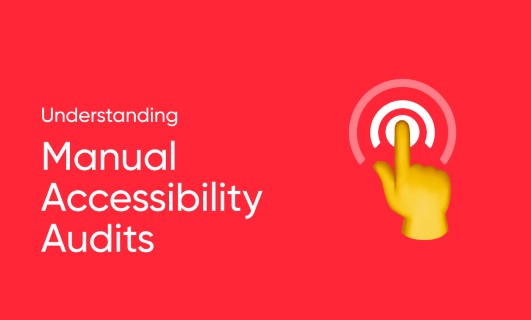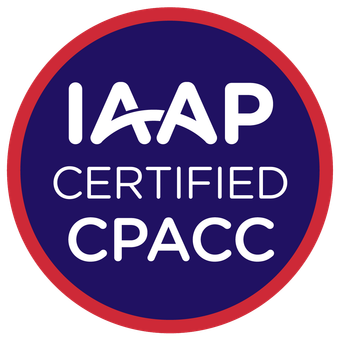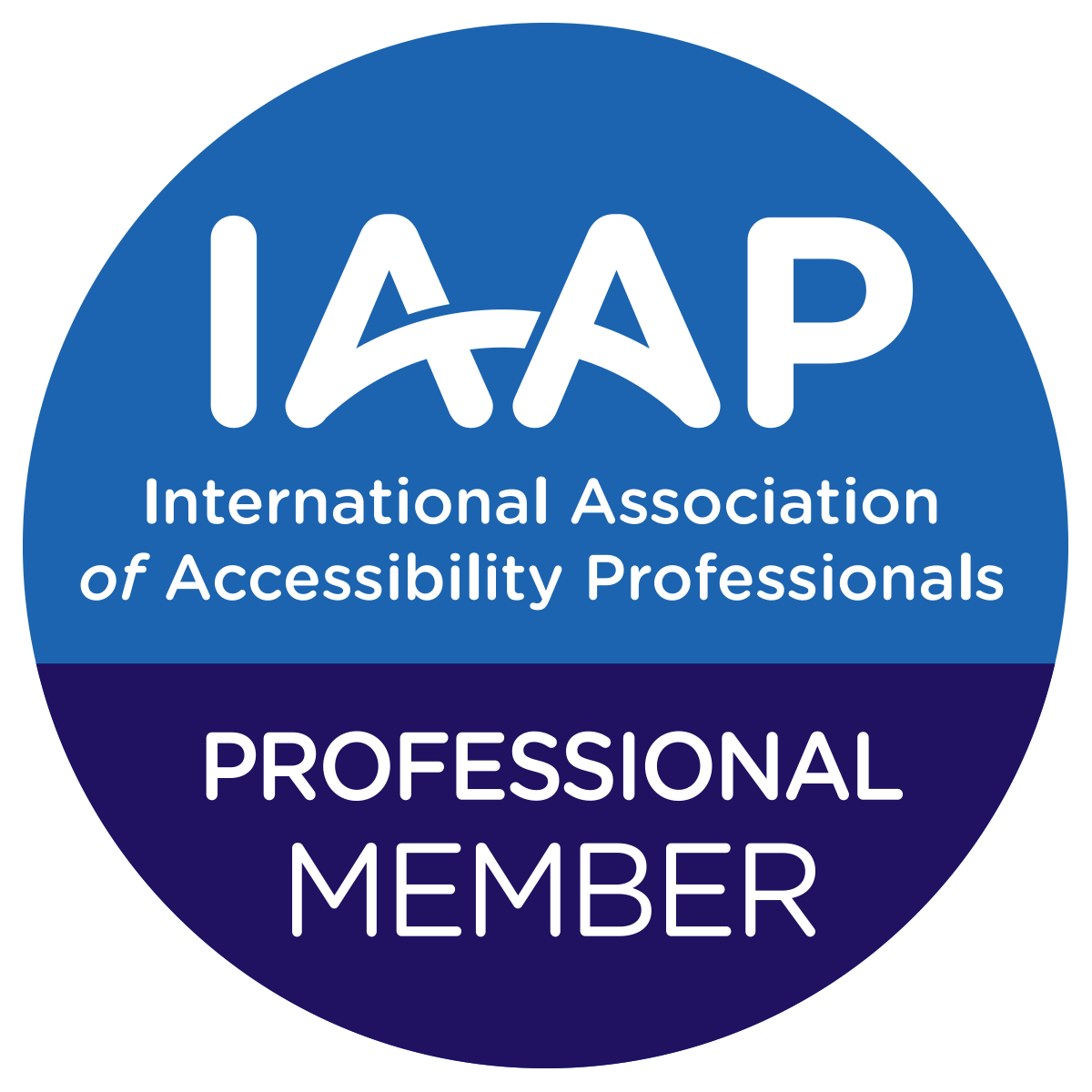Table of Contents
In the modern digital landscape, accessibility is not a luxury but a necessity. With billions of individuals relying on the Internet for education, employment, and engagement, ensuring that your digital content is accessible to all, including people with disabilities, is paramount. Manual accessibility audits serve as a linchpin in this effort, providing a thorough analysis of web properties to ensure compliance with established web accessibility standards. This comprehensive guide aims to demystify manual accessibility audits, outline their importance, and discuss the process involved in conducting them.
The Importance of Manual Accessibility Audits
The Human Factor
Accessibility is about creating an inclusive digital world that accommodates all users, including those with disabilities. This is where the human factor in manual accessibility audits becomes crucial. Human auditors bring a level of empathy and understanding to the process that automated tools simply cannot match. They interpret guidelines with a nuanced perspective, considering a variety of disabilities and how users with these disabilities interact with web content. For example, while a tool can flag the lack of alt text, a human can determine the effectiveness of that text in conveying the intended message to visually impaired users. In essence, human judgment is irreplaceable in contextualizing and prioritizing issues based on real-world use and impact.
Limitations of Automated Testing Tools
Automated testing tools are valuable for initial scans to identify clear-cut accessibility issues across a website swiftly. However, they are not infallible and often cannot grasp the subtleties of human interaction with web content. These tools may miss complex accessibility barriers, such as those encountered in dynamic content, or fail to evaluate the user experience of navigating a website with assistive technologies. In addition, automated tools may not accurately assess the usability and practicality of web elements, potentially overlooking barriers that could prevent users with disabilities from having a seamless experience. Manual auditing fills these gaps, offering a comprehensive analysis that ensures not just compliance, but true accessibility.
Legal Compliance and Ethical Responsibility
Overview of Legal Frameworks
Around the globe, legal frameworks such as the Americans with Disabilities Act (ADA) and the Equality Act 2010 require that digital content be accessible to people with disabilities. The ADA, for example, has been interpreted to suggest that websites should be as accessible as physical spaces, while the Equality Act mandates reasonable adjustments be made to prevent discrimination against disabled individuals in the UK. These laws ensure that failure to provide accessible web content is not just a matter of poor practice, but a legal risk that can lead to litigation and financial penalties, highlighting the necessity for organizations to prioritize web accessibility in their digital strategy.
Ethical Implications of Digital Inclusivity
The ethical imperative for digital inclusivity transcends legal obligations, rooted in the principle that access to information is a fundamental human right. Ensuring that websites and online tools are accessible to all, including those with disabilities, aligns with ethical business practices and social responsibility. It acknowledges the diversity of web users and emphasizes the importance of inclusivity in a digital era where the internet is a central component of education, employment, and social interaction. By adopting an inclusive approach, organizations demonstrate a commitment to fairness and equality, fostering a positive societal impact and enhancing their own reputations as socially responsible entities.
Understanding Web Accessibility
What is Web Accessibility?
Web accessibility is the inclusive practice of ensuring there are no barriers that prevent interaction with, or access to, websites on the World Wide Web by people with physical, cognitive, or visual disabilities. When sites are correctly designed, developed, and edited, all users have equal access to information and functionality. For instance, web accessibility encompasses providing alternative text for images for blind users, captions for videos for deaf users, and ensuring that all interactive functions can be completed with a keyboard for those who cannot use a mouse. This aspect of digital design and development is crucial for creating an online environment that is inclusive and equitable for all users, regardless of their abilities.
Importance for People with Disabilities
For people with disabilities, web accessibility is more than just convenience; it’s about independence and participation. It represents the gateway to opportunities that might otherwise be inaccessible: employment, social interactions, education, and more. An accessible web can empower individuals, offering them the autonomy to shop, learn, work, and share their perspectives online without facing unnecessary and exclusionary obstacles. Accessibility is not a feature; it’s a fundamental aspect of web development that upholds the principle that the Internet should be open and accessible to all.
Key Principles of Accessibility
Perceivable, Operable, Understandable, and Robust (POUR) Principles
The principles of accessibility are encapsulated by the POUR acronym—Perceivable, Operable, Understandable, and Robust. These guidelines are part of the Web Content Accessibility Guidelines (WCAG), which are a set of recommendations for making web content more accessible.
- Perceivable means that information and user interface components must be presented in ways that users can discern, typically via the senses like sight or hearing.
- Operable involves ensuring that interface elements are navigable and usable by everyone, including those who use assistive technologies or cannot use a mouse or touchscreen.
- Understandable ensures that content and the operation of user interface must be comprehendible, meaning that users must be able to understand the information as well as the operation of the user interface.
- Robust refers to content that must be interpreted reliably by a wide variety of user agents, including assistive technologies, and should remain accessible as technologies evolve.
Adhering to these principles is essential for developing content that can be used by anyone, regardless of how they access the web.
Web Content Accessibility Guidelines (WCAG)
Brief History of WCAG
The Web Content Accessibility Guidelines, or WCAG, have evolved to address the changing needs of the internet and its users. Introduced by the World Wide Web Consortium (W3C), WCAG 1.0 was released in 1999 and established the initial standard for web accessibility. In 2008, WCAG 2.0 updated these standards to cover a wider range of technologies and disability needs, providing a more universal set of guidelines.
This was further refined with WCAG 2.1 in 2018, which included improvements for mobile accessibility, people with low vision, and those with cognitive and learning disabilities. The forthcoming WCAG 2.2, expected to build upon 2.1, aims to provide updated and more inclusive criteria for web content. The iterative nature of these guidelines demonstrates an ongoing commitment to digital accessibility as technology and user needs to evolve.
Understanding WCAG Success Criteria
WCAG outlines specific criteria to help designers and developers create accessible content. For example, to meet various WCAG criteria, websites might provide text alternatives for non-text content, ensure sufficient contrast between text and background, or implement navigable content through keyboard interfaces. Understanding the differences between the compliance levels of A, AA, and AAA is also vital.
Level A is the minimum standard for accessibility, often addressing immediate and critical barriers. Level AA includes a wider set of requirements that tend to address the major concerns for most users and is commonly targeted as the standard for compliance. Level AAA is the most stringent, covering an extensive range of criteria for the best possible accessibility, but not all AAA criteria are practical for all content. Organizations often aim for Level AA compliance to provide a robust accessibility standard without the more demanding specifications of AAA.
The Manual Accessibility Audit Process
Pre-Audit Preparations
Before diving into a manual accessibility audit, it’s essential to clearly define what parts of the website will be examined—this is the scope of the audit. Deciding the scope may involve determining which pages, features, and content types are most critical for users or which ones are representative of the site’s broader accessibility. A focused scope ensures that the audit is manageable and meaningful.
The next step involves gathering the necessary tools and resources. This could include assistive technologies like screen readers, checklists based on the WCAG, browser extensions for accessibility testing, and any other resources that might assist auditors in their task. Having the right tools at hand helps in creating an effective and efficient audit process. It’s also important to ensure that those conducting the audit are versed in these tools and understand the principles of web accessibility deeply to perform an insightful evaluation.
Detailed Walkthrough of the Audit Process
A manual accessibility audit is methodical, requiring attention to detail and a structured approach. A typical audit process might start with the tester examining the site’s navigation, ensuring that it is fully accessible via keyboard and that the site structure is semantically correct, which aids assistive technologies. From there, the tester would likely move on to evaluate the proper use of headings, labels, and roles, and confirm that ARIA (Accessible Rich Internet Applications) attributes are implemented correctly, where necessary.
The process would also include verifying that all content is readable and understandable, that images have appropriate alt text, and that multimedia content is accompanied by captions or transcripts. Color contrast checks are another critical part of the audit, ensuring that text is legible against its background for those with visual impairments.
Testers would then review interactive elements, like forms and controls, for accessibility, ensuring they are operable by everyone. Finally, the audit would conclude with an assessment of the site’s adaptability and compatibility across different browsers and assistive technologies.
Checklist of Common Web Elements to Test
- Navigation: Keyboard accessibility, logical order, skip links.
- Headings: Proper hierarchy, clarity, and labeling.
- Images: Alt text presence and accuracy.
- Multimedia: Captions, transcripts, and audio descriptions.
- Forms: Label associations, error identification, and instructions.
- Color and Contrast: Sufficient differentiation between text/background.
- Links: Descriptive text, focus indicators.
- Tables: Proper markup with headers and summaries if necessary.
- Scripts and Dynamic Content: Functionality with assistive tech, dynamic updates accessibility.
- Error Handling: Clear guidance and correction suggestions.
- Mobile Accessibility: Responsive design, touch controls.
- ARIA Usage: Correct roles and attributes for complex web components.
Sweans, headquartered in the UK, specializes in Website Accessibility Auditing and possesses expert proficiency in conducting manual accessibility evaluations. They are dedicated to implementing the comprehensive procedures detailed above to ensure your digital assets are accessible to all users.
Post-Audit Actions
Once a manual accessibility audit is completed, the next crucial steps involve ensuring that the findings are effectively communicated and acted upon. Here are the steps that can be taken:
Compiling Findings into an Actionable Report:
- Executive Summary: Begin with an executive summary that outlines the purpose of the audit, the methodology used, and a high-level overview of the findings.
- Detailed Findings: Present the findings in detail, categorized by the level of severity and the WCAG guidelines they relate to.
- Screenshots and Examples: Include screenshots and specific examples to illustrate the issues where applicable.
- Accessibility Score (if applicable): Provide an overall accessibility score based on the audit, if relevant, to give stakeholders a quick snapshot of the current state.
Recommendations for Remediation and Improvement:
- Prioritized List of Issues: Offer a prioritized list of issues to be addressed, ideally grouped into ‘critical’, ‘high’, ‘medium’, and ‘low’ priorities.
- Remediation Steps: For each issue, recommend clear and concise steps for remediation. Include code snippets or design pointers where possible.
- Best Practice Guidance: Provide guidance on best practices to avoid similar issues in future updates or projects.
- Training Opportunities: Recommend training for the development and design teams to raise awareness and competence in creating accessible content.
Tools and Techniques for Manual Audits
Assistive Technologies
When conducting manual accessibility audits, a suite of assistive technologies is employed to simulate the user experience of people with disabilities. Here’s an overview of some key tools:
Screen Readers: These are software programs that enable people who are blind or have severe visual impairments to read the text displayed on the computer screen with a speech synthesizer or braille display. Notable screen readers include JAWS, NVDA, and VoiceOver for Mac. When conducting audits, it’s essential to test websites with multiple screen readers to ensure compatibility and usability across different platforms and devices.
Magnification Tools: For users with low vision, magnification software or features within operating systems can enlarge text, images, and interactive elements. Auditors use these tools to ensure that magnification does not distort the website content and that the site remains navigable and understandable even when zoomed in.
Voice Recognition Software: This technology allows users to control a computer and dictate text using voice commands. It is especially beneficial for individuals with motor disabilities who cannot use a mouse or keyboard. During an audit, voice recognition software is used to navigate through the website and interact with content, checking for any potential barriers.
Using these assistive technologies during the manual audit process not only helps identify issues that automated tools might miss but also provides insight into the practical challenges faced by users with disabilities, leading to a more empathetic and thorough approach to web accessibility.
Manual Testing Techniques
Manual testing techniques are a critical part of ensuring web accessibility, as they can uncover issues that automated testing may overlook. Some of the key manual testing methods include:
Keyboard-Only Navigation: Many users with motor disabilities, visual impairments, or other accessibility needs rely on a keyboard to navigate web content. Manual testing involves navigating a site using only keyboard commands to ensure that all interactive elements are reachable and usable without a mouse. This includes tabbing through links, buttons, form fields, and other controls, as well as accessing drop-down menus and other complex widgets.
Color Contrast Analysis: Adequate color contrast is vital for users with color vision deficiencies or low vision. Auditors manually check the contrast ratios of text, images, and graphical objects to confirm they meet or exceed the recommended guidelines set by the WCAG. This process often involves using tools that analyze the colors used on the web pages and compute the contrast ratio between text (or images of text) and their backgrounds.
Other Techniques: Beyond these, manual testing may include:
- Ensuring that all content can be accessed with different browser zoom levels without loss of content or functionality.
- Checking that multimedia content has captions, transcripts, or sign language interpretations.
- Evaluate whether error messages are clear and provide guidance for correction.
- Assessing the logical order of elements on the page when navigated through a screen reader.
- Confirming that all forms are labelled correctly and that form errors are announced and can be corrected by the user.
Expert Tips for Thorough Audits
When conducting web accessibility audits, industry experts emphasize a strategic and comprehensive approach. Here are some insights for effective auditing:
Develop a Structured Framework: Before diving into the audit, create a clear, structured framework that outlines each step of the process. This includes establishing criteria for evaluation, selecting a representative sample of the website’s pages for testing, and defining the scope of the audit to cover various user interactions and content types.
Combine Automated and Manual Testing: While automated tools can quickly identify some issues, they can’t catch everything. Experts advise a combination of automated testing for broad sweeps and manual testing for nuanced evaluation, particularly for complex interactions or dynamic content.
Involve Users with Disabilities: Engaging real users with disabilities in the testing process can provide invaluable firsthand insights into the practical challenges faced. This user-centred testing can reveal obstacles that might not be obvious through technical evaluations alone.
Prioritize Issues Based on Impact: Once issues are identified, prioritize them based on their impact on users. Addressing critical barriers that prevent access to essential functions or content should come before less severe issues.
Keep Up with Evolving Standards: Accessibility standards are not static; they evolve as technology and understanding of accessibility needs grow. Experts must stay informed about the latest guidelines and legal requirements to ensure that audits remain up-to-date and comprehensive.
Document Everything: Detailed documentation of findings, including the severity of issues, the criteria they violate, and potential solutions, is crucial. This not only helps in rectifying problems but also serves as a record of compliance efforts.
Educate and Train the Team: Make sure that everyone involved in the design, development, and content creation is aware of accessibility standards and best practices. Regular training sessions can keep the team informed and motivated to maintain accessibility.
Plan for Ongoing Evaluation: Accessibility is not a one-time fix but an ongoing commitment. Experts recommend regular audits and updates to the website to ensure sustained compliance as new content is added and as technology changes.
Case Studies and Examples
Success Stories
Businesses across various sectors have made strides in improving their web accessibility, setting precedents for others to follow. For example, a major international airline overhauled its website and mobile app to ensure that all customers, including those with visual, auditory, or mobility impairments, could easily book flights and check-in online. They involved users with disabilities in their design process, conducted extensive testing, and provided training for their developers and content creators. As a result, they saw an increase in customer satisfaction and a decrease in service calls, leading to both improved customer experience and cost savings.
Another example is a global e-commerce retailer that implemented a comprehensive accessibility program. They adopted the WCAG guidelines, redesigned their website to support screen readers, optimized navigation for keyboard-only users, and incorporated alternative text for images. Their commitment to accessibility not only broadened their market reach but also demonstrated corporate social responsibility, enhancing their brand reputation.
Lessons Learned
One common pitfall is assuming that once a website meets accessibility standards at launch, no further work is needed. However, accessibility needs to be maintained and regularly checked, especially when new content is added or when there are updates to the website’s structure. Another oversight is neglecting to design for all types of disabilities, focusing on just one aspect, like screen reader compatibility, and missing out on others, such as cognitive or motor impairments.
Businesses have also learned the hard way that ignoring accessibility can lead to legal repercussions and negative publicity. By proactively embracing accessibility, businesses can avoid the legal and reputational risks associated with non-compliance.
An essential lesson is that accessibility should not be an afterthought. It needs to be integrated into the development process from the start. Implementing accessibility early on is more cost-effective than retrofitting it later. Moreover, businesses that involve people with disabilities in the design and testing phases often uncover insights that lead to innovative solutions, benefiting all users.
Beyond the Audit: Maintaining Accessibility
Implementing Changes
After completing an accessibility audit, it’s critical to systematically address the findings. Best practices for implementing changes include creating an action plan that prioritizes issues based on their impact on users and compliance requirements. Engaging with people who have disabilities in the remediation process ensures that solutions are practical and effective. Clear communication about the changes, their rationale, and their expected outcomes with all stakeholders, including development teams, designers, content creators, and executives, is also essential to ensure that the necessary resources and attention are allocated to the initiative.
Regular Reviews and Updates
Web accessibility is not a one-time task but an ongoing commitment. Regular reviews and updates are necessary to ensure that websites continue to meet accessibility standards as technology, content, and user needs evolve. Scheduling periodic audits, monitoring for compliance through automated tools, and updating training materials for staff can help maintain accessibility standards. Additionally, when new features or content are added, they should be evaluated for accessibility before going live.
Building a Culture of Accessibility
Cultivating an organization-wide mindset that prioritizes accessibility is fundamental. This can be achieved by integrating accessibility into the company’s values and providing accessibility training for all employees. Leadership should demonstrate their commitment to accessibility through policy development and resource allocation. Recognizing and rewarding inclusive design practices can also reinforce the importance of accessibility. By making accessibility a part of every conversation about product development and customer service, it becomes woven into the fabric of the organization’s operations and philosophy.
Conclusion
The essential nature of manual accessibility audits cannot be overstated; they are pivotal in the journey towards an inclusive internet. These audits serve as the cornerstone for identifying barriers within digital content and ensuring that web experiences are universally accessible. By conducting thorough and regular audits, organizations can ensure compliance with legal standards and foster an environment of inclusivity.
Moreover, accessibility should be seen as a continuous journey, not a final destination. It requires persistent effort and dedication beyond the initial audit. Organizations that embrace this philosophy ensure that their digital offerings remain accessible to all users, regardless of ability. By committing to ongoing accessibility practices, organizations not only comply with ethical and legal standards but also demonstrate a commitment to equality and social responsibility. This ongoing commitment helps in building a more inclusive world where the internet becomes a space for everyone, without exception.
I’m Ajay C Thomas, Founder & CEO of Sweans Technologies Ltd, a global agency specializing in website design, branding, web application development, and eCommerce, serving clients around the world with proven success.







